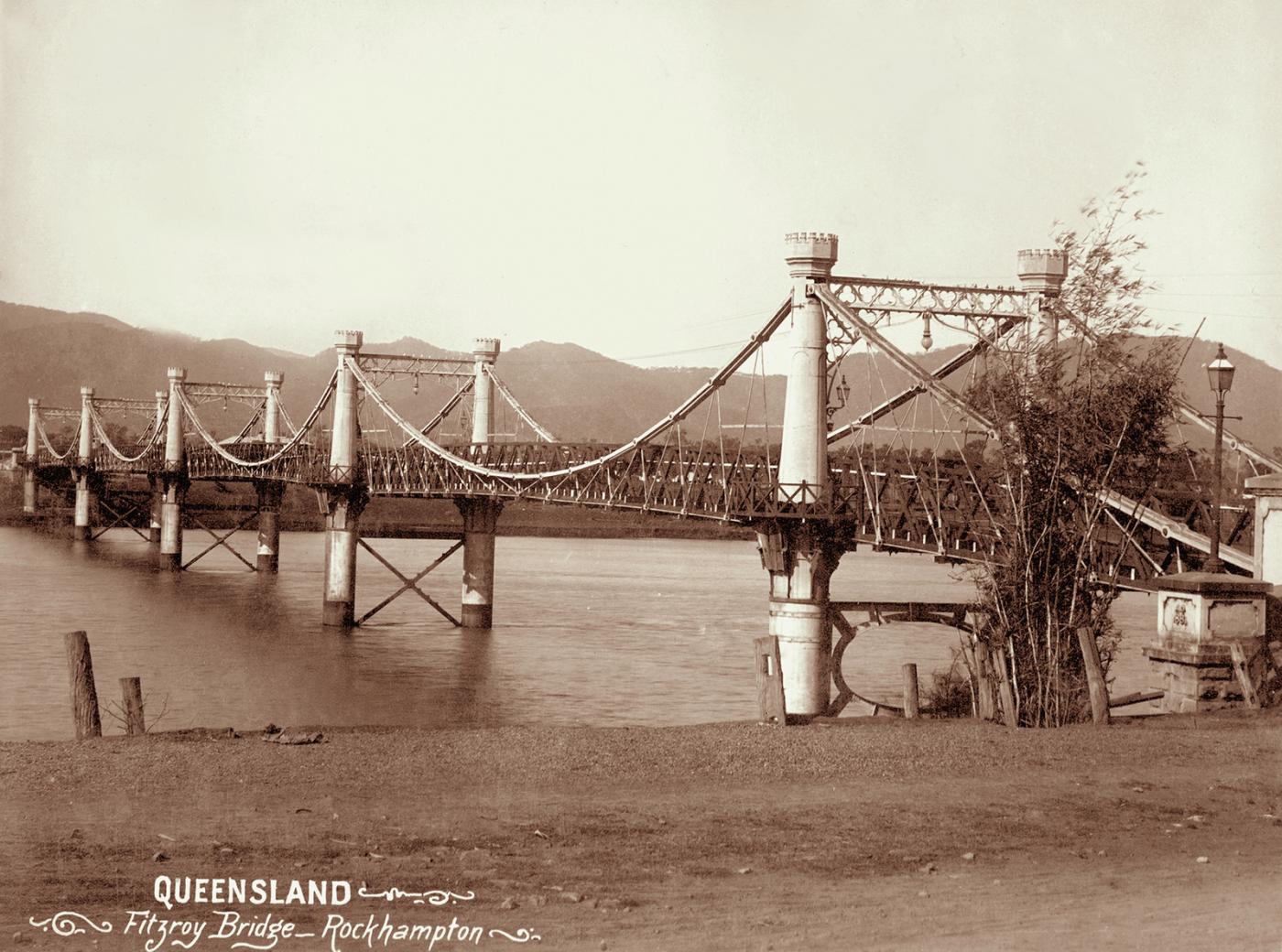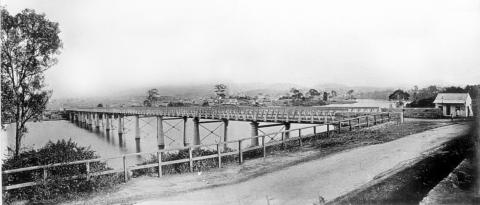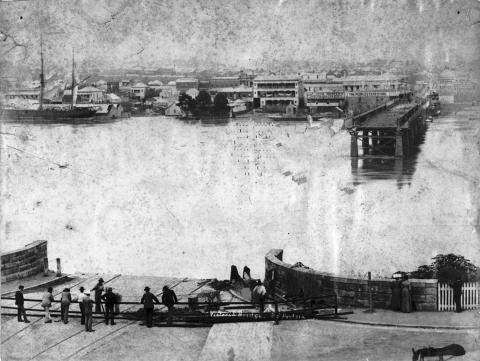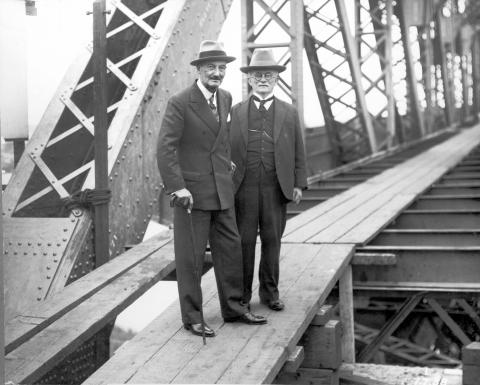
- News of the day
-
Morning Bulletin, Friday 11 October 1946, page 1
Miners or labourers' rates for men on Fitzroy Bridge works?
BRISBANE, October 10 - The Industrial Court was asked today to decide whether men engaged in preliminary construction work at the new bridge over the Fitzroy River, Rockhampton, were to be paid miners' or labourers' rates.
The Court, which comprised Messrs Ferry and Riordan, reserved its decision.
Mr Coneybeer, for the Rockhampton Bridge Board, said that the site for the bridge caisson had to be levelled off to an average depth 5 ft 9 in., the depth being 3 ft at one end and 8 ft 6 in. at the other.
Mr C. Fallon, for the AWÜ, said that the levelling of the ground was all part of the one operation of sinking the caisson, and it was miners' work.
Mr Coneybeer said that on the opposite bank of the river, levelling was done by a bulldozer, and no-one could suggest that the work done by a bulldozer was miners' work.
Mr Fallon: The fact remains that the disputed operations were not done by a bulldozer.
Cost to Council
Mr Coneybeer said that when the levelling off was completed, a new gang of men was put on to the work of sinking the caisson. If the union's contention was upheld, it would cost the Rockhampton City Council £150 back money.
He added that the court was being asked to hold that a man whose legs were not even below the ground level, was a miner and should be paid £1/-/2 a week more than labouring rates.
Mr W. Clark, for the Main Roads Commission, supported Mr Coneybeer's view.
- Background
-
"In the days before roads and railway to Brisbane, the Fitzroy River provided all transport and communications for much of Central Queensland through the port of Rockhampton. But its location towards the mouth of one of Australia largest river basins also left the town vulnerable to flooding. Since first white settlement in 1856, there have been many floods on the Fitzroy, three of which reached record heights: in 1918 (10.11m), 1954 (9.3m) and 1991 (9.3m). The first of these, the highest, longest and most destructive, has passed into local memory as ‘the great flood’. According to Aboriginal stories, there had been ‘big feller water’ many times before whites arrived, and to far greater heights, but most Europeans dismissed those as mere myth. The 1918 flood unfolded as a contest of strength and endurance between people and the landscape in an era devoid of modern technology and emergency services. It revealed both cooperation and conflict within in a community under great stress.
For five days from 20 January 1918, cyclonic rain fell continuously in and around Rockhampton and throughout the Fitzroy Basin. Downpours in the headwaters a fortnight earlier meant the river was already swollen. With the latest falls, the river broke its banks, despite desperate sandbagging, and left elevated parts of the town marooned as an island in a vast sea of brown swirling waters. The smaller, separate municipality of North Rockhampton lay further isolated across the raging river. With hundreds of homes inundated, Police Inspector McGrath and Mayor Kingel coordinated the task of evacuating people in dinghies and the few motorboats then available. Some 1380 people alone were rescued from the ‘swamp’ or Depot Hill area and, in other areas, many more escaped by foot. In the days that followed, eight people drowned in the floodwaters—seven men and one woman."
/150.5126304,-23.3757449,7/450x450@2x.png?access_token=pk.eyJ1IjoicXNhLWRpc2NvLXFsZCIsImEiOiJjamJmdTgyZXEyeWNjMnlxZm8xcmtieHgxIn0.lmT9J5tTPKGuuccQgCVSAg)



